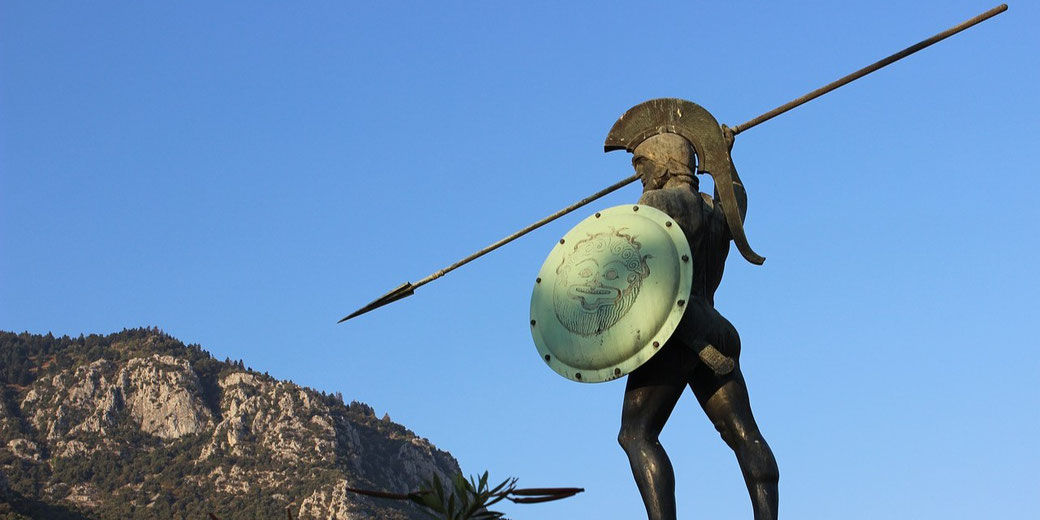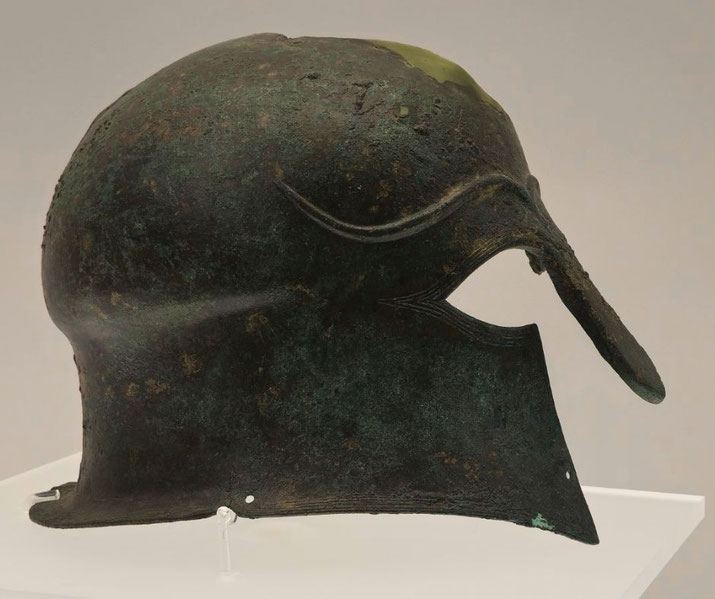What was a Greek phalanx and how did it work?

Across the plains of ancient Greece, battles often began with the steady advance of hundreds of armoured citizens who moved in tight formation.
Each man gripped a spear in one hand and carried a round shield in the other, and he pressed forward in unison with the rest of his unit.
This was the Greek phalanx, a coordinated block of infantry which led Greek warfare for centuries.
What was a Greek phalanx?
During the 7th to 4th centuries BCE, city-states across Greece adopted the phalanx as their preferred method of organising infantry.
It replaced older styles of warfare that relied on individual combat between aristocrats.
In its place, the phalanx demanded unity. Every soldier within the formation played a single role within a greater whole.
Hoplites, who were heavily armoured infantrymen, stood in ranks as wide as the army’s number of soldiers allowed, though commonly eight rows deep, but sometimes deeper.
Because they stood close together and they maintained formation, they created a nearly solid wall of shields and spear points.
Behind this defence line, each hoplite held a dory, a wooden spear, which measured approximately 2.5 to 3 metres in length.
With a leaf-shaped iron point and a butt-spike on the opposite end, the spear was both a thrusting weapon and a tool that they used to finish off fallen enemies.
The soldiers also carried a short sword for use in close combat when the lines collapsed.
Armour included a bronze helmet, a breastplate or linen cuirass, greaves to protect the shins, and a round shield usually called an aspis.
Although some modern sources use the term hoplon, the name 'hoplite' more likely derived from the Greek word hopla, meaning arms or equipment.
How did the phalanx work?
When they positioned their shields to the left, hoplites covered part of their own body and part of the man beside them.
This overlapping defence created a tight reliance between neighbouring soldiers.
The man on the extreme right had no one to cover his unshielded side, which made that edge of the formation particularly weak.
As a result, Greek commanders usually placed best soldiers or experienced warriors on the right flank to strengthen it.
Over time, armies learned to turn their entire line toward that side to protect the weak edge and press the advantage against the enemy’s left.
On the battlefield, phalanxes advanced in unison while maintaining order through shouted commands or, in the case of Spartans, the beat of flutes.
Speed and mobility played little part in their tactics. Instead, the success of the phalanx relied on staying compact and steady.
When two opposing phalanxes met, the encounter became a violent test of strength and endurance.
Scholars have debated the exact nature of the contact, whether it involved literal pushing or simply the pressure of bodies and shields, but the term othismos ("the push"), a term whose interpretation remains unclear to historians, described this moment of direct impact.
Once one side lost its footing or broke formation, the enemy could exploit the gap and force a retreat.

Traditional verses Macedonian phalanxes
Flat, open terrain gave the phalanx the best conditions for success. Its rigid structure became vulnerable on rough ground, in narrow passes, or in forests, where movement broke apart the tight ranks.
Light infantry, archers, and cavalry sometimes supported the phalanx, though their role remained secondary in early hoplite warfare.
Their importance increased over time, particularly in more complicated engagements during the late 5th century BCE.
In the 4th century BCE, Philip II of Macedon modified the traditional model by introducing the sarissa, a spear that could reach about 4 to 6 metres in length.
To use this much longer weapon effectively, soldiers needed both hands, so they carried smaller shields that were slung from the shoulder.
Philip also trained his men in professional standing armies and made his formations much deeper than those of the classical Greek city-states.
At the Battle of Chaeronea in 338 BCE, the Macedonian phalanx demonstrated its superiority over the older hoplite style by defeating the allied forces of Athens and Thebes.
Macedonian innovations and decline
By combining the Macedonian phalanx with cavalry and flexible manoeuvres, Alexander the Great used it to destroy the Persian Empire.
Against less organised infantry, the long reach of the sarissa gave his men a clear advantage.
However, in later generations, this strength turned into a weakness. Because the Macedonian phalanx lacked flexibility and needed flat terrain, it struggled when faced with more adaptable enemies.
Roman legions, which fought in smaller, more independent units, exposed the phalanx’s limitations during the 2nd century BCE.
This is best seen at the Battle of Cynoscephalae in 197 BCE, Roman forces under Titus Quinctius Flamininus defeated the Macedonian phalanx by exploiting gaps and attacking from the flanks.
Once disorganised, the phalanx could not recover. From that point forward, the formation began to disappear from warfare, replaced by more dynamic systems of fighting.
For centuries, though, it was the foundation of Greek military power, and its structure had reinforced a broader cultural ideal: every citizen had a place, and the safety of the whole depended on the discipline of each part.
What do you need help with?
Download ready-to-use digital learning resources
Copyright © History Skills 2014-2025.
Contact via email
With the exception of links to external sites, some historical sources and extracts from specific publications, all content on this website is copyrighted by History Skills. This content may not be copied, republished or redistributed without written permission from the website creator. Please use the Contact page to obtain relevant permission.





